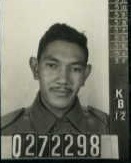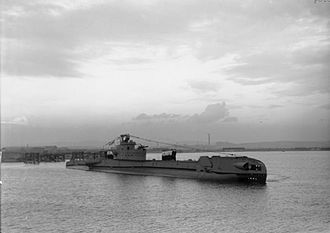
Garden Island is a narrow island about 10 kilometres (6 mi) long and 1.5 kilometres (0.9 mi) wide, lying about 5 kilometres (3 mi) off the Western Australian coast, to which it is linked by an artificial causeway and bridge.
USS Blueback (SS-326), a Balao-class submarine, was the first submarine of the United States Navy to be named for a type of salmon, specifically, the Blueback salmon, also known as the sockeye salmon.
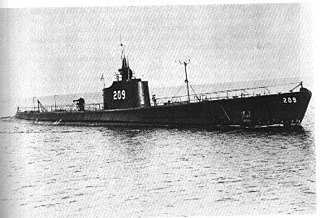
USS Grayling (SS-209), a Tambor-class submarine, was the fourth ship of the United States Navy to be named for the grayling.

USS Salmon (SS-182) was the lead ship of her class of submarine. She was the second ship of the United States Navy to be named for the salmon, a soft-finned, game fish which inhabits the coasts of America and Europe in northern latitudes and ascends rivers for the purpose of spawning.
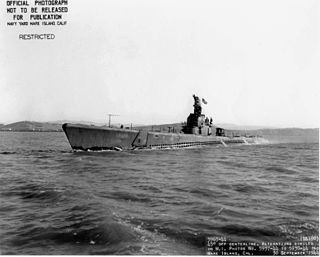
USS Spearfish (SS-190), a Sargo-class submarine, was the only ship of the United States Navy to be named for the spearfish, any of several large, powerful, pelagic fishes of the genus Tetrapturus allied to the marlins and sailfishes.

USS Puffer (SS-268), a Gato-class submarine, was the first ship of the United States Navy to be named for the puffer.
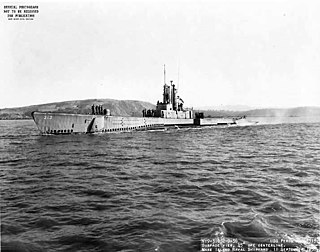
USS Perch (SS/SSP/ASSP/APSS/LPSS/IXSS-313), a Balao-class submarine, was the second submarine of the United States Navy to be named for the perch, a rather small European fresh-water spiny-finned fish.

USS Boarfish (SS-327), a Balao-class submarine, was a ship of the United States Navy named for the boarfish, a fish having a projecting hog-like snout.

USS Hardhead (SS-365), a Balao-class submarine, was a ship of the United States Navy named for the hardhead, a fish of the croaker family. Hardhead received six battle stars for World War II service. All six of her combat patrols were "successful".
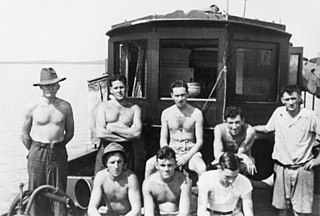
Z Special Unit was a joint Allied special forces unit formed during the Second World War to operate behind Japanese lines in South East Asia. Predominantly Australian, Z Special Unit was a specialist reconnaissance and sabotage unit that included British, Dutch, New Zealand, Timorese and Indonesian members, predominantly operating on Borneo and the islands of the former Dutch East Indies.

Although Australia was remote from the main battlefronts, there was considerable Axis naval activity in Australian waters during the Second World War. A total of 54 German and Japanese warships and submarines entered Australian waters between 1940 and 1945 and attacked ships, ports and other targets. Among the best-known attacks are the sinking of HMAS Sydney by a German raider in November 1941, the bombing of Darwin by Japanese naval aircraft in February 1942, and the Japanese midget submarine attack on Sydney Harbour in May 1942. In addition, many Allied merchant ships were damaged or sunk off the Australian coast by submarines and mines. Japanese submarines also shelled several Australian ports and submarine-based aircraft flew over several Australian capital cities.

Operation Rimau was an attack on Japanese shipping in Singapore Harbour, carried out by an Allied commando unit Z Special Unit, during World War II using Australian built Hoehn military MKIII folboats. It was a follow-up to the successful Operation Jaywick which had taken place in September 1943, and was again led by Lieutenant Colonel Ivan Lyon of the Gordon Highlanders, an infantry regiment of the British Army.
Services Reconnaissance Department (SRD), also known as Special Operations Australia (SOA) and previously known as Inter-Allied Services Department (ISD), was an Australian military intelligence and special reconnaissance unit, during World War II.

HMS Storm was an S-class submarine of the Royal Navy, and part of the third group built of that class. She was built by Cammell Laird and launched on 18 May 1943. So far, she is the only RN ship to bear the name Storm.
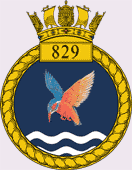
829 Naval Air Squadron was a squadron of the Royal Navy Fleet Air Arm. Before it was decommissioned in March 2018, it operated the AgustaWestland Merlin HM2 helicopter.
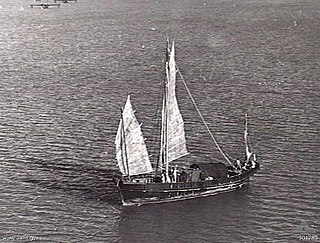
HMAS River Snake was a Snake-class junk built for the Royal Australian Navy during the Second World War. She was launched in 1945 and commissioned into the Royal Australian Navy on 19 February 1945. She was used by the Services Reconnaissance Department (SRD) and was paid off on 2 November 1945, before being handed over to the British Civil Administration in Borneo.
Operation Lagarto was an Australian military operation in Timor during World War II in 1943. It was run by the Services Reconnaissance Department. The Naval component of the mission was named Operation Mosquito. The operation was ambushed and captured. Japanese intelligence used information from the mission to lure other Australian commandos to Timor where they were captured and killed, notably Operation Cobra (Timor), Operation Sunlag and Operation Suncob.
On 5 January 1945, a party of five Indonesians left Darwin to ascertain the fate of Operation Lion. On 14 January, the Dutch submarine K XV lands the party at the coast of the Djiko Doped Bay, north east Minahassa. The leader was captured; the remainder were evacuated by Catalina flying boat on 31 January.
Operation Sunbaker was a military operation by the Services Reconnaissance Department of Australian Army in Timor in May 1945. The aim was to insert a team of operatives behind enemy lines. A B-24 Liberator A72-159 of 200 Flight RAAF taking the team was shot down on 17 May near Dili with the loss of all on board.
Operation Mackerel was an operation carried out in World War II by the Australian Imperial Force. Three men went ashore on Java in September 1942 to collect information. They were accompanied by two members of the Dutch submarine K12. The group had difficulty during the landing as the landing boats capsized in the heavy surf, a member of group injured his back and much of the gear was lost. The mission had to be abandoned early as the captain of the submarine resurfaced in full view of the coastguard that was in communication with the Japanese. The leader of the mission deemed it to be unsafe so decided to evacuate the party.
